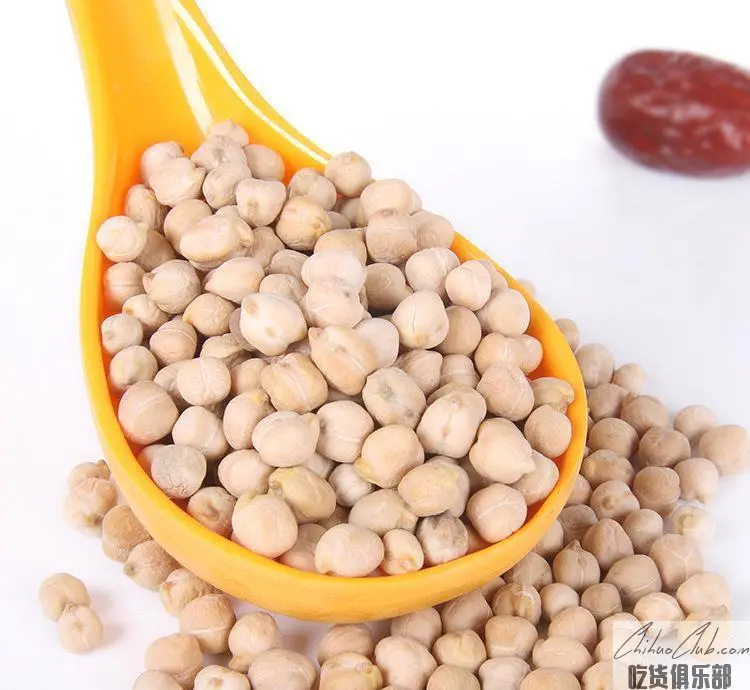
Mulei eagle bean
-
Update date::
-
Date of protection::
-
Protected range:The scope of protection of the wooden garban genomic products is based on the “Response to the Protection of the Geographical Indications of the Mulei Chickpeas” by the People’s Government of Mulei Kazak Autonomous County, Xinjiang Uygur Autonomous Region (Mu County Zhengxin [2007] No. 2) Prevailing, it is the Yinggebao Township, Xijier Town, Dongcheng Town, Zhaobishan Township, Baiyanghe Township, Mulei Town, Xinhu Township, Liangcai Farm, Kekekuduk Ranch, Mulei Kasak Autonomous County, Xinjiang Uygur Autonomous Region. There are 10 townships and towns in Da Nangou, Wubu Buike Township, and administrative areas.
-
Category:
Chickpea, also known as peach pea, chickpea, is a butterfly-shaped herbaceous plant. It is one of the important grains of India and Pakistan. It is also common in Europe to eat chickpeas. It has a long history in medicine.
Chickpea, also known as peach pea, chickpea, is a butterfly-shaped herbaceous plant. It is one of the important grains of India and Pakistan. It is also common in Europe to eat chickpeas. It has a long history in medicine. history. The starch of the chickpea has a chestnut scent. Chickpea powder plus milk powder made of soy milk powder, easy to absorb and digest, is a nutritious food for infants and the elderly. Chickpeas can also be made into a variety of snacks and fried beans. The grain can be used as a diuretic, a milking agent, can treat insomnia, prevent skin diseases and prevent and treat biliary diseases. Starch is also widely used in the paper and textile industries. The oldest discovery of the domesticated chickpeas in the Neolithic site comes from the southeastern part of Turkey and the northern part of Syria, dating back to around 8000 BC; it was not until 5,000 years later that archaeological evidence about chickpeas was Appeared in the Indian subcontinent. According to the "Chinese Agricultural Encyclopedia", the variety is mainly distributed in the warm and arid regions of the world, and is the largest edible bean crop in India. Chickpeas originated in western Asia and the Near East. It is a large-scale cultivated bean plant in the world, about 150 million mu. The planting area of India and Pakistan accounts for more than 80% of the world, and China has only sporadic distribution. Mainly distributed in Xinjiang, Qinghai and Gansu provinces. Mulei County in Xinjiang is the main producing area of chickpeas.
Mulei eagle bean quality technical requirements (a) variety. Desi type local chickpea varieties. (2) Site conditions. 1. It is located in the northern foot of Tianshan Mountain and the southeastern margin of Junggar Basin. It is 900 meters to 1700 meters above sea level. It belongs to arid temperate desert climate and is a typical “rain-fed” agricultural area. 2. Soil: The hilly dry land is dominated by chernoze and chestnut soil, total nitrogen is not less than 0.07%, total phosphorus is not less than 0.045%, pH is 7 to 7.9, organic matter content is 1.5% to 2.5%, and soil thickness is Above 1 meter. (3) Cultivation techniques. 1. Seed selection: The seeds after purification and rejuvenation are selected so that the seed quality standards are consistent in color, the seeds are full, no disease spots, the germination rate is over 85%, the purity is 96%, and the clarity is over 98%. 2. Sowing time and density: The sowing time is from April 1 to 10, the seedling density is 330,000 plants/ha to 375,000 plants/ha, the maximum seedling density is 390,000 plants/ha, and the seeding rate is 75 to 90 kg/ha. The seeding depth is 4 cm to 5 cm. 3. Field management: (1) No fertilizer is applied during the whole growth period. (2) Weeding and weeding 2 to 3 times in the seedling stage, and removing the grass in the later stage. (3) Implement a rotation system with cereal crops such as wheat and barley for more than two years to avoid continuous cropping with other bean crops. 4. Environmental and safety requirements: The use of pesticides, fertilizers, etc. must comply with relevant national regulations and must not pollute the environment. (4) Harvest. When more than 80% of the whole pods turn yellow, the white film between the seeds and the pods disappears. The time is generally from August 1st to 15th, harvested in time, naturally dried, and when the moisture is less than or equal to 12.5%, the package is packed into the warehouse. (5) Quality characteristics. 1. Sensory characteristics: the seed coat is yellowish brown, the shape is half wrinkled, and the shape is rib. The appearance of the eagle head is obvious, the top has a sputum, the grain size is uniform, and the 1000-grain weight is 160 to 200 grams. After puffing, the grain is crispy and delicious, with a strong fragrance. 2. Physical and chemical indicators: protein content ≥ 22.0%, fat ≤ 5.0%, oleic acid ≥ 20.0%, linoleic acid ≥ 55.0%, calcium ≥ 150mg / 100g, zinc ≥ 20mg / kg, iron ≥ 7mg / 100g. 3. Safety requirements: Product safety indicators must meet the relevant regulations of the state for similar products.
Apply to:
The producers within the scope of protection of the GI GI products may submit an application to the Quality and Technical Supervision Bureau of the Mulei Kazak Autonomous County of Xinjiang Uygur Autonomous Region for the use of the “Special Mark for Geographical Indication Products”, which is approved by the General Administration of Quality Supervision, Inspection and Quarantine.